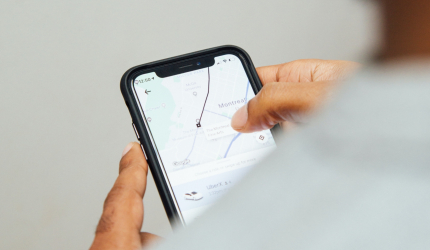One of the reasons why a mobile campaign can’t reach its highest objectives is the late setting up of metrics tracking. There are many companies that are tempted to use mobile marketing which has become ‘so trendy’. There they are; head down and running somewhere but without any tracking strategy…until the financial officer puts in a request for the results of the marketing ROI…
But seriously, mobile visibility is better than on the web (so take advantage of it) and the ‘make-it-or-break-it’ stage is just as quick to reach. Things can go much faster than you might think and the metrics along with it. This is not the time for you to be asking yourself what parameters you need to be looking at.
Of course this is not the situation that you are going to find yourself bogged down in because you are reading this articleJ.
Analytical data that can be gleaned from application tracking is particularly interesting since it’s more pragmatic: it can take advantage of the hyper-standardization of the mobile environment. Even on Android! Believe me!
So, from the outset, tracking problems that are linked to the following are immediately eliminated:
- Internet browsers (cookie refusal, integration problems, old-version incompatibility…)
- Plugins (absence of Javascript module and/or Flash…)
- Hardware (too large variety of screen resolutions, underperforming equipment…).
Similarly, the absence of such difficulties provides the assurance that smartphone processors take advantage of an almost-identical user experience. In theory, only the quality of the internet connection could still be a source of inequality between users (over and above terminals that were built in the Middle Ages).
You have several tools at your disposal to measure the effectiveness of your campaigns. The most well-known are ATInternet, Flurry or Google Analytics. On mobile media, anything (or thereabouts) can be measured.
The sensitive metric information that is common to each activity is as follows:
- The smartphone model being used
- The exploitation system version
- The average time spent on the application
- The most-viewed content
- The bugs experienced via a ‘crash reporter’
- The country in which the app is being opened.
After that there is of course the really interesting metrics that show up in the case of the mobile:
-
The Number of Downloads
Generally-speaking, unless a user reinitializes their phone, you could assume that one download onto a smartphone equals one user.
-
AppStore SEO
You are going to promote your application through different channels: web site, Facebook or even through inApp advertising on other applications. So as to limit the loss of users while browsing, you can get them to turn up directly on your download page in AppStore or on Google Play. This path is your first conversion funnel. That’s exactly where your success is to be found and your user needs to click on ‘Download’. This first metric will tell you something about the potential commitment to your brand.
-
QRCode
Or any other code that enables the easy transition from real to digital data. Confirm the relevance of the location of your code and the interest aroused in your application.
-
The Type of Connection and the Loading Time
We can see that on mobiles there is a strong correlation between the actions within an application and the network cover. Deteriorations in connectivity and/or a heavy application in terms of requests will limit the number of pages viewed and the number of actions carried out inApp. The comparison of these metrics will enable finding out about the quality of the application suffering from bad network cover.
-
Push Notifications
There’s nothing better for customer loyalty. Push notifications can detail and send back metrics that are as varied as the opening rate but above all the events that are linked to it (closing of the app or action-button use).
-
InApp Events
Beyond the identification of buttons or zones that are clicked on the most, your tracking tool must allow you to set up conversion funnels that are adequate enough to follow their development according to your multi-channel campaigns.
-
iBeacons and Datamining
Beacons bring along with them extra client knowledge. They’re sometimes criticized but more often than not revered as a goldmine providing the brand with precious information. It will be important for the brand that puts it to use to integrate this parameter in the very heart of a conversion funnel and to analyze the actions that are carried out.
-
Uninstall Rate
Even when it gets uninstalled, it’s always possible to put that information to good use. By matching the use rate of an identified segment and the uninstall rate, you can measure the relevance of your application. That’s of course just one example. There are many reasons why a user uninstalls an app: abusive, intrusive or too infrequent push notifications might be other reasons or there might be a lack in usefulness for the user, badly-adapted content, slow application, etc. … One thing’s for sure: an application that is uninstalled is rarely reinstalled. Whatever it takes, you will have to follow the drop in interest of a segment regarding your app.
In general terms, here’s a short list of questions that you need to be asking your future Analytics service-provider:
- How long has your company been providing mobile analytics? (If it’s Google, then just forget the question).
- What’s the experience of the consultants? (Same as before for Google).
- What is your strategy for tracking integration, recuperation and transmission?
- What arguments allow you to state that mobile tracking is precise?
- How is data collection carried out? Tags? Technical material.
- Can you analyze GPS data?
- Does your reporting tool enable for comparative segmentation?
Sources:




